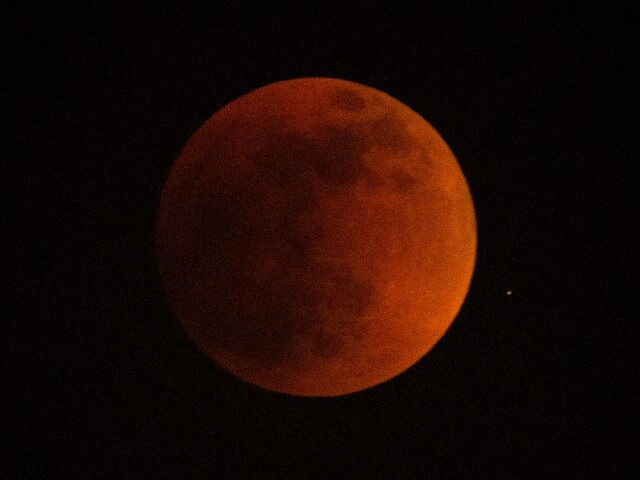A ‘Red’ Moon is rising on Election Day, Tuesday, November 8.
According to NASA, a total lunar eclipse — also referred to as a ‘Blood Moon’ — is set to occur on Tuesday when the sun, earth, and moon align so that the moon moves into earth’s shadow.
“In a total lunar eclipse, the entire Moon falls within the darkest part of Earth’s shadow, called the umbra. When the Moon is within the umbra, it will turn a reddish hue,” NASA writes.
The nearly three-hour event is set to begin at 3:02 a.m. Eastern and 12:02 a.m. Pacific, when the eclipse will start to be visible. The total eclipse will occur at 5:17 a.m. Eastern and 2:17 a.m. Pacific.
The eclipse will end at 5:50 a.m. Pacific, but by then, the moon will have already set for those in the Eastern and Midwest regions of the country.
The U.S. regions that will have the best viewing conditions of the ‘Blood Moon’ will be “from Maine through Mississippi and most of the Intermountain West,” according to a meteorologist with AccuWeather.
“Clouds will be a higher concern for stargazers across most of the Midwest and into the Plains, across the West Coast and parts of the Atlantic coast in the southeastern United States,” Lada added.
Stargazers can view the entirety of the eclipse in Alaska and Hawaii, according to NASA.
Elsewhere in the world, the eclipse will be visible to observers in Central America, the northern regions of South America, Asia, Australia, and New Zealand.
NASA recommends being in a dark environment, away from lights, with a clear sky for the most optimal eclipse viewing.
After Tuesday’s event, the next total lunar eclipse is set to occur on March 14, 2025.
You can follow Ethan Letkeman on Twitter at @EthanLetkeman.

COMMENTS
Please let us know if you're having issues with commenting.